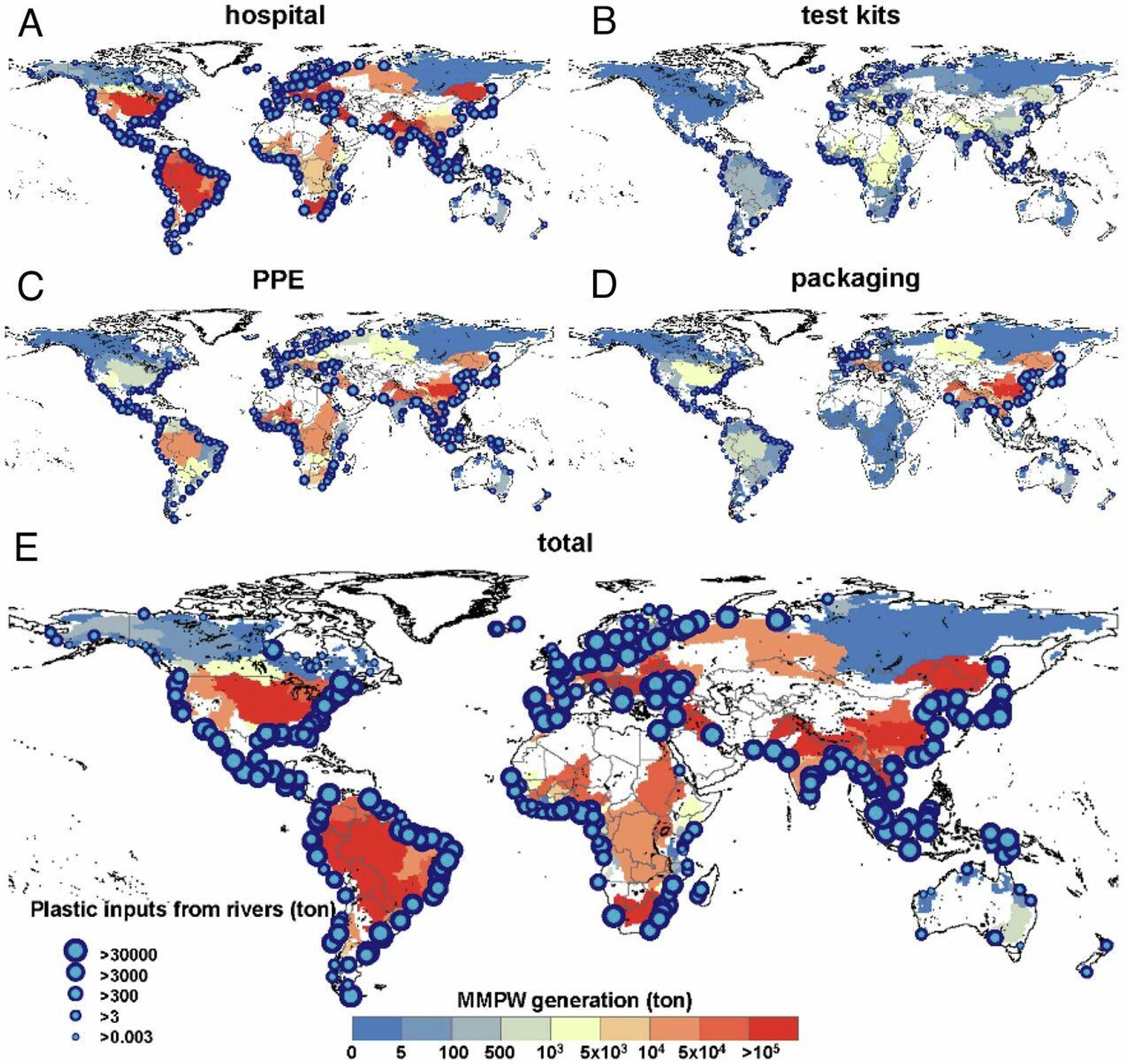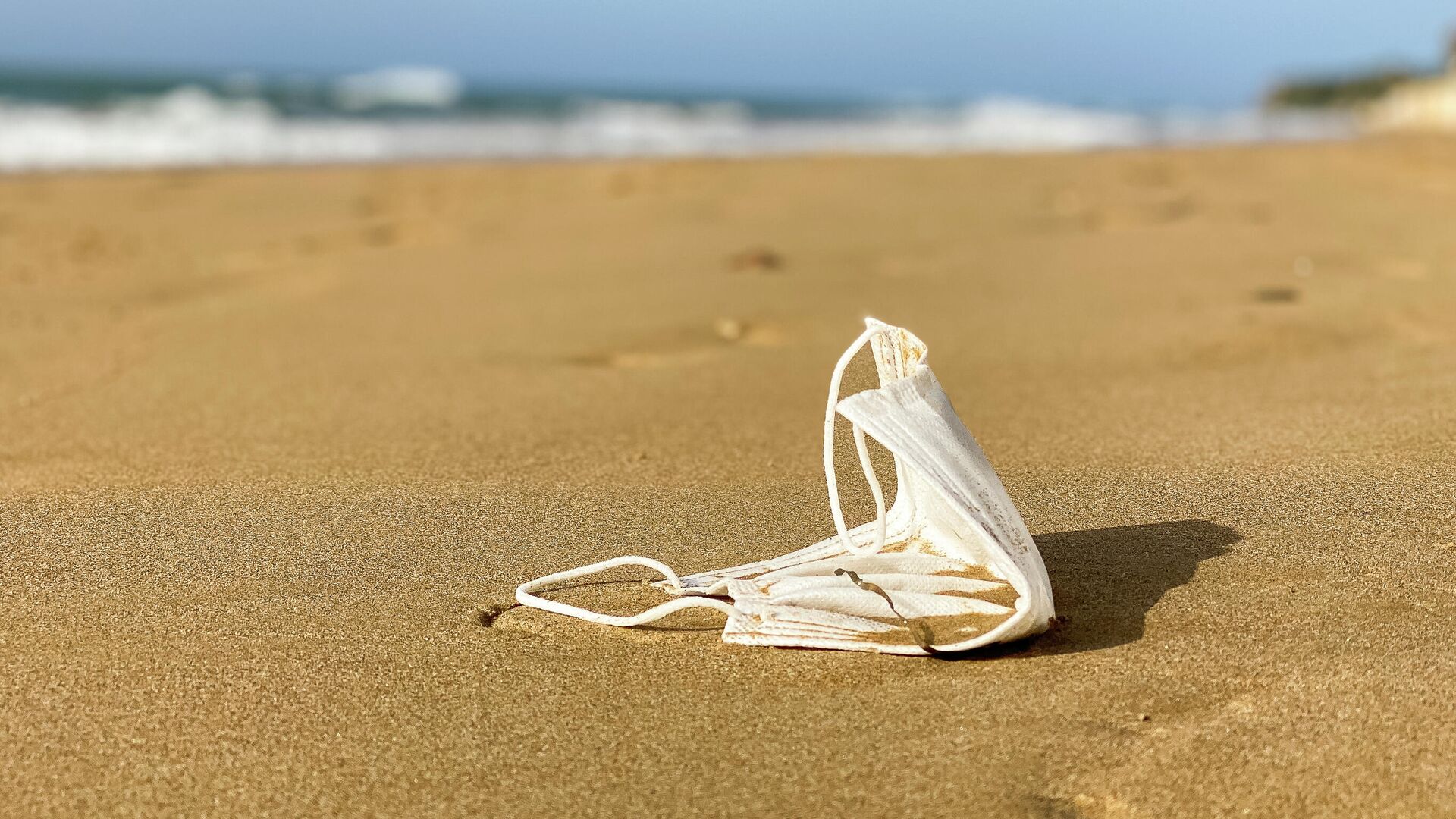Over 25,000 Tons of PPE Plastic Waste Floating in Oceans Due to COVID-19, Research Finds
Subscribe
Since the pandemic began in 2020, many have become accustomed to using Personal Protective Equipment, which is often disposable and not used for a long time. The problem of massive environmental pollution by used masks, gloves and antiseptic bottles poses a significant threat to the biosphere on a global scale.
More than 25,000 tons of personal protection equipment (PPE) and other types of COVID-19-related plastic trash have entered the oceans, new research revealed.
Researchers from Nanjing University's School of Atmospheric Sciences and UC San Diego's Scripps Institution of Oceanography led the new analysis, which examined from the beginning of the pandemic in 2020 until August 2021.
And the scientists' computer model predicts that nearly three-quarters of it, some 71%, will wash up on beaches by the end of the year.
According to the research, from the start of the epidemic until August 2021, 193 of the world's countries produced 8.4 million tons of pandemic-related plastic garbage. The majority of the offending COVID-19-related plastic comes from medical waste generated by hospitals, which "dwarfs" the contribution of PPE and packaging from online shopping giants like Amazon and eBay.
"Plastic waste causes harm to marine life and has become a major global environmental concern," the paper's introduction reads. "The recent COVID-19 pandemic has led to an increased demand for single-use plastic, intensifying pressure on this already out-of-control problem."
The researchers claimed that their work underscores "a long-lasting problem for the ocean environment and is mainly accumulated on beaches and coastal sediments."
Masks, face shields, disposable gloves, and surgical gowns are examples of personal protective equipment. PPE and any plastic packaging used to store these products, as well as plastic from test kits, are all considered "COVID-19-related plastic."
If not properly disposed of, all of these substances can infiltrate rivers and eventually end up in the world's oceans.

Accumulated riverine discharge of pandemic-associated mismanaged plastics to the global ocean. Panels are for the discharges caused by (A) hospital medical waste, (B) COVID-19 virus test kits, (C) PPE, (D) online-shopping packaging material, and (E) the total of them. The background color represents the generated MMPW in each watershed, while the sizes of the blue circles are for the discharges at river mouths.
© Photo : PNAS / Yanxu Zhang
The Shatt al-Arab, Indus, and Yangtze rivers, which flow into the Persian Gulf, Arabian Sea, and East China Sea, respectively, account for 73% of total plastic discharge, according to the study. The discharge from European rivers accounts for 11% of the total, with modest contributions from other continents.
The researchers compared the number of the novel coronavirus cases with the amount of COVID-19-related plastic debris that enters rivers by continent as well. Asia had the highest amount of waste produced, 46.3% of global pandemic-related plastic waste, while having a total of 31.2% of global COVID-19 cases, behind both Americas with 47.6%.
According to the authors, this reflects the poorer degree of medical waste management in many developing nations, including India and China, when compared to industrialized countries in North America and Europe with large numbers of infection cases.
The majority of ocean plastic waste is likely to settle on beaches and the bottom within three to four years, according to the study. And a lesser part will enter the open ocean, where it will eventually become trapped in the centers of ocean basins or subtropical "gyres," which are vast systems of rotating currents in each of the five major oceans.
Unfortunately, garbage patches made up of PPE, litter, fishing gear, and other waste can continue to form in the world's five subtropical gyres. The Arctic Ocean, in particular, is a "dead-end" for plastic trash pushed into it, according to the researchers. This is owing to ocean circulation patterns.
The authors advocate for better medical waste management in epicenters, particularly in developing nations, to combat the influx of plastic garbage into the oceans.
They also call for the environmental impact of PPE and other plastic items to be made more widely known, as well as for the development of other environmentally friendly materials.



